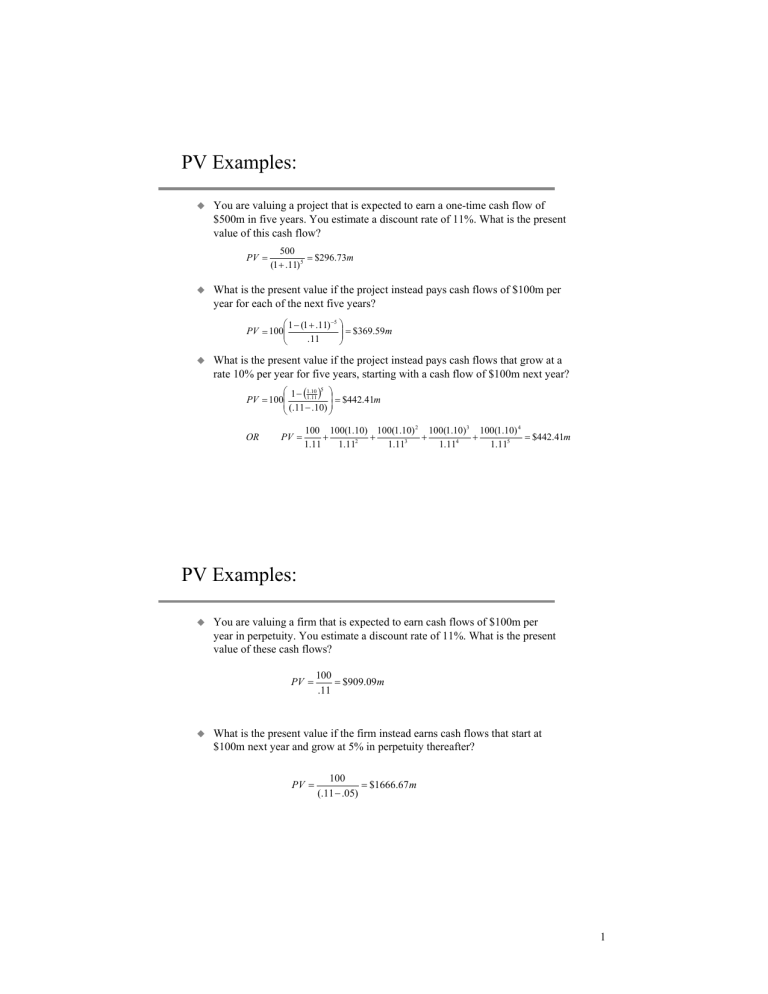
If you find this topic interesting, you may also be interested in our future value calculator, or if you would like to calculate the rate of return, you can apply our discount rate calculator. Keep reading to find out how to work out the present value and what’s the equation for it. Present value is based on the concept that a particular sum of money today is likely to be worth more than the same amount in the future, also known as the time value of money. Conversely, a particular sum to be received in the future will not be worth as much as that same sum today. One way to tell if you’re looking at a future value or present value problem is to look at how many times the interest rate is being applied.
Present Value Formula and Calculator
Treasury bonds, which are considered virtually risk-free because they are backed by the U.S. government. For example, suppose you want to know what interest rate (compounded semi-annually) you need to earn in order to accumulate $10,000 at the end of 3 years, with an investment of $7,049.60 today. Based on this result, if someone offered you an investment at a cost of $8,000 that would return $15,000 at the end of 5 years, you would do well to take it if the minimum rate of return was 12%. This is equivalent to saying that at a 12% interest rate compounded annually, it does not matter whether you receive $8,511.40 today or $15,000 at the end of 5 years. In the case of not having a consistent rate, it wouldn’t be so easy to calculate the present value.
- In the present value example, however, the interest rate is applied twice.
- Determine the present value of all the cash flows if the relevant discount rate is 6%.
- This works by the rule that the higher the discount rate is, the lower the present value of the future cash flows will be.
Example: What is $570 next year worth now, at an interest rate of 10% ?
Annuity denotes a series of equal payments or receipts, which we have to pay at even intervals, for example, rental payments or loans. The present value of a single amount is an investment that will be worth a specific sum in the future. For example, if you invest $1,000 today at an interest rate of 12%, it’ll be worth $2,000 in 5 years. Present value is a quick and easy way to get a good idea of the value of a sum of money or cash flow.
How do I calculate the present value of a single amount?
To learn more about or do calculations on future value instead, feel free to pop on over to our Future Value Calculator. For a brief, educational introduction to finance and the time value of money, please visit our Finance Calculator. We can combine equations (1) and (2) to have a present value equation that includes both a future value lump sum and an annuity. This equation is comparable to the underlying time value of money equations in Excel. Wolfram|Alpha can quickly and easily compute the present value of money, as well as the amount you would need to invest in order to achieve a desired financial goal in the future. Plots are automatically generated to help you visualize the effect that different interest rates, interest periods or future values could have on your result.
What Is the Present Value of a Single Amount?
And it’s called the discount rate because this is the rate that we’re using to discount the future cash flow. It’s still fundamentally about “discounting” those future cash flows back to the present. Much more on “discounting” further down, but we do also have a separate article on discounting future cash flows if you’re interested. Let’s assume we have a series of equal present values that we will call payments (PMT) for n periods at a constant interest rate i.
Formula for Present Value (PV) in Excel
However, if your $1 is worth $0.90 tomorrow, your PV will be less than 1. Present value is used as a starting point for assessing the fairness of a future financial liability or benefit. So make sure that you use other metrics alongside present value to get the best idea possible. A higher present value is better than a lower one when assessing similar investments.
The time value of money (TVM) principle, which states that a dollar received today is worth more than a dollar received on a future date. The present value of an amount politico analysis of money is worth more in the future when it is invested and earns interest. Another advantage of the net present value method is its ability to compare investments.
For example, $1,000 today should be worth more than $1,000 five years from now because today’s $1,000 can be invested for those five years and earn a return. If, let’s say, the $1,000 earns 5% a year, compounded annually, it will be worth about $1,276 in five years. Calculate the present value of this sum if the current market interest rate is 12% and the interest is compounded annually. Future value is the total sum of money that will accrue over time when that initial sum is invested. For example, if you were to invest in a company, the assumed rate of return could end up changing in each of the following three years. This could be due to a number of factors such as volatility in the industry or market.

Present value is important because it allows investors and businesses to judge whether some future outcome will be worth making the investment today. It is also important in choosing among potential investments, especially if they are expected to pay off at different times in the future. The higher the discount rate you select, the lower the present value will be because you are assuming that you would be able to earn a higher return on the money. In many cases, investors will use a risk-free rate of return as the discount rate.
Excel is a powerful tool that can be used to calculate a variety of formulas for investments and other reasons, saving investors a lot of time and helping them make wise investment choices. When you are evaluating an investment and need to determine the present value (PV), utilize the process described above in Excel. For the PV formula in Excel, if the interest rate and payment amount are based on different periods, then adjustments must be made. A popular change that’s needed to make the PV formula in Excel work is changing the annual interest rate to a period rate. That’s done by dividing the annual rate by the number of periods per year. Since there are no intervening payments, 0 is used for the “PMT” argument.

